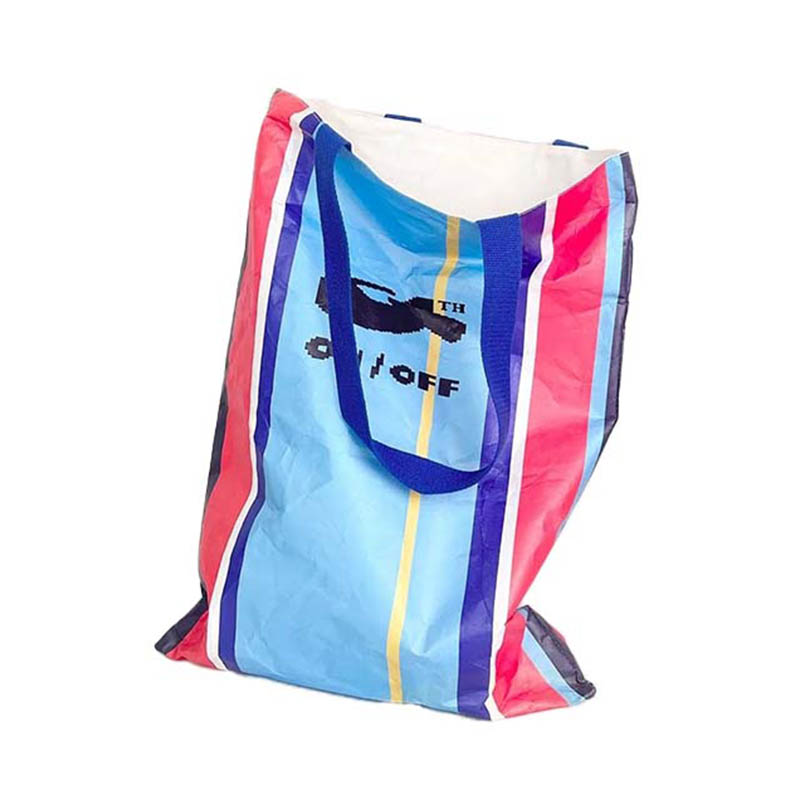Is the material used in Tyvek Tote Bag environmentally friendly?
2025-09-26
Before we dive into the environmental debate, it's crucial to understand what Tyvek is. Tyvek is a brand of flash-spun high-density polyethylene (HDPE) fibers. Imagine billions of microscopic HDPE fibers tangled together into a single, remarkably strong sheet. This unique manufacturing process, developed by DuPont, results in a material that is simultaneously lightweight, tear-resistant, and waterproof. It feels like synthetic paper but possesses the durability of a fabric, making it an ideal candidate for everything from protective house wrap to durable shipping envelopes and, of course, our focus: the versatile Tyvek Tote Bag.
The Environmental Question: Is a Tyvek Tote Bag Eco-Friendly?
This is the core of our discussion, and the answer is nuanced. Labeling anything as simply "good" or "bad" for the environment is an oversimplification. A proper assessment requires a lifecycle analysis. When evaluating the environmental footprint of a Tyvek Tote Bag, we must consider several factors:
-
Raw Material: Tyvek is 100% made from HDPE, a #2 plastic, which is recyclable in many curbside programs. However, the specialized manufacturing process means it cannot be recycled with standard plastic bags or bottles.
-
Durability and Longevity: This is the most significant environmental advantage. A single, well-made Tyvek Tote Bag can replace hundreds, if not thousands, of single-use plastic bags over its lifetime. Its resistance to tears and water means it won't need frequent replacement.
-
Weight and Resource Efficiency: Tyvek is incredibly lightweight. This reduces the energy and emissions associated with transportation compared to heavier canvas or cotton totes.
-
End-of-Life: While not biodegradable, Tyvek is recyclable through specific programs. Its durability is its primary eco-feature; the goal is to use one bag for as long as possible.
In summary, the eco-friendliness of a Tyvek Tote Bag is tied directly to its reusability. It is a superb alternative to single-use items and can have a lower overall impact than a cotton bag, which requires significant water and pesticides to produce.
Key Features and Product Parameters of Our Tyvek Tote Bags
Our Tyvek Tote Bags are engineered for maximum performance and style. Below is a detailed breakdown of their specifications, presented to highlight their professional quality.
Key Features:
-
Ultra-Lightweight: Easily folds into a pocket or purse, always ready for impromptu shopping.
-
Exceptional Tear Resistance: Far stronger than paper or plastic, ensuring longevity.
-
Water & Stain Resistant: Protects your belongings from spills and light rain.
-
Easy to Clean: Simply wipe clean with a damp cloth.
-
Customizable: Excellent surface for high-quality printing of logos and designs.
Product Parameters Table
| Parameter | Specification | Notes |
|---|---|---|
| Material | 100% Tyvek (High-Density Polyethylene) | Original material by DuPont. |
| Standard Size | 15" (W) x 16" (H) x 5" (Gusset) | Spacious enough for groceries, books, and daily essentials. |
| Weight | ~2.5 ounces (approx. 70 grams) | Extremely light for its strength. |
| Handle Length | 24 inches | Comfortable for shoulder carry. |
| Load Capacity | Up to 30 lbs (approx. 13.6 kg) | Robust enough for heavy items. |
| Printing Options | Full-color digital or screen printing | Vibrant, smudge-proof designs. |
Advantages Over Conventional Tote Bags
How does the Tyvek Tote Bag stack up against common alternatives?
-
vs. Cotton Totes: Cotton bags require over 100 uses to offset their higher initial environmental impact (water, energy, pesticides). The Tyvek Tote Bag has a much lower initial footprint and achieves a "greener" status much faster through reuse.
-
vs. Non-Woven PP Bags: While also made from polypropylene, non-woven bags are generally less durable and tear more easily than a genuine Tyvek Tote Bag. Tyvek offers a superior feel and longevity.
-
vs. Canvas: Canvas is durable but heavy and often not water-resistant. It takes up more space and is slower to dry. Tyvek wins on portability and weather resistance.
Proper Care and Maximizing the Lifespan of Your Tyvek Tote Bag
To ensure your Tyvek Tote Bag serves you for years, follow these simple care instructions:
-
Cleaning: Wipe with a damp cloth and mild soap if needed. Air dry.
-
Storage: Fold it flat when not in use. Its low weight prevents it from losing its shape.
-
Avoid: Do not machine wash or dry, and keep it away from direct high heat sources (like an open flame), as it can melt like any plastic.
If you are very interested in Wenzhou Runyu Packaging's products or have any questions, please feel free to contact us.
Frequently Asked Questions (FAQ) About Tyvek Tote Bags
1. Can I recycle my old Tyvek Tote Bag?
Yes, but not in your regular curbside bin. Tyvek is recyclable, but it requires a specialized stream. DuPont has partnered with TerraCycle for a free recycling program. You can mail your used Tyvek products to be properly recycled.
2. Is Tyvek biodegradable or compostable?
No, Tyvek is not biodegradable or compostable. Its environmental benefit is not in its decomposition but in its extreme durability and ability to be reused thousands of times, preventing waste from single-use bags.
3. How does the printing on the bag hold up? Is it toxic?
The printing we use on our Tyvek Tote Bags is non-toxic and meets strict safety standards. The prints are highly resistant to smudging and fading because the ink bonds well with the non-porous Tyvek material, ensuring your design lasts as long as the bag itself.




